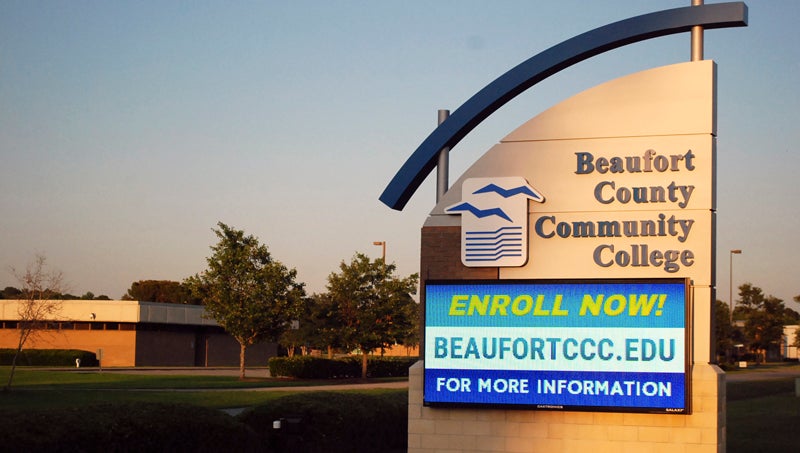BCCC cuts 2017-2018 budget by 10 percent
Published 6:38 pm Monday, April 17, 2017

- NEW PROGRAM: Beaufort County Community College is set to add boat manufacturing to its list of programs after the Golden LEAF Foundation awarded BCCC with a $200,000 grant towards the program Thursday. (File)
For a second year, Beaufort County Community College is cutting its budget by 10 percent.
Officials made the announcement last week, citing a drop in full-time equivalent students, a factor on which the state bases much of its funding. The drop equates to a $1.1 million budget cut at the college for the 2017-2018 fiscal year.
Although BCCC made the same percentage of cuts last year, one notable difference is the impending cuts in personnel. Last year, President Dr. Barbara Tansey said the college’s department heads were able to soften the blow to employees and keep the majority of cuts to equipment.
However, as of July 1, when the new fiscal year begins, BCCC expects to cut three full-time faculty members, four full-time staff members and four part-time staff members this time around, along with leaving three more full-time and two more part-time positions unfilled and demoting one position, according to a press release.
Every department was forced to cut personnel and/or slash other portions of their budget, according to Tansey.
“While supply, travel and equipment budgets will be reduced significantly, personnel will also be reduced due to its disproportionate share of the budget. Half of the community colleges in North Carolina are facing similarly lean budgets,” the release states.
A large drop in student enrollment began when BCCC withdrew from the Federal Direct Student Loan program as of July 2015 — a decision made because of a rising student-loan default rate, or the number of students who are unable to repay their loans.
If BCCC reached a 30-percent default rate, other funding may have been at risk, and at 40 percent, it would lose Title IV funds. In 2014, the default rate spiked to about 29 percent.
College officials also attribute the drop in enrollment to an overall decline in population in BCCC’s service area, which BCCC is attempting to combat by expanding its services to other counties and high school students.
State funding is based on a two-year rolling average, which is why the college is experiencing more cuts even though its student population has begun to stabilize, the release stated.
Students in curriculum and continuing education programs decreased from 3,797 in fall 2015 to 3,541 in fall 2016, according to the release.
“We did the best we could to maintain instruction for students attending the college,” Tansey said.





